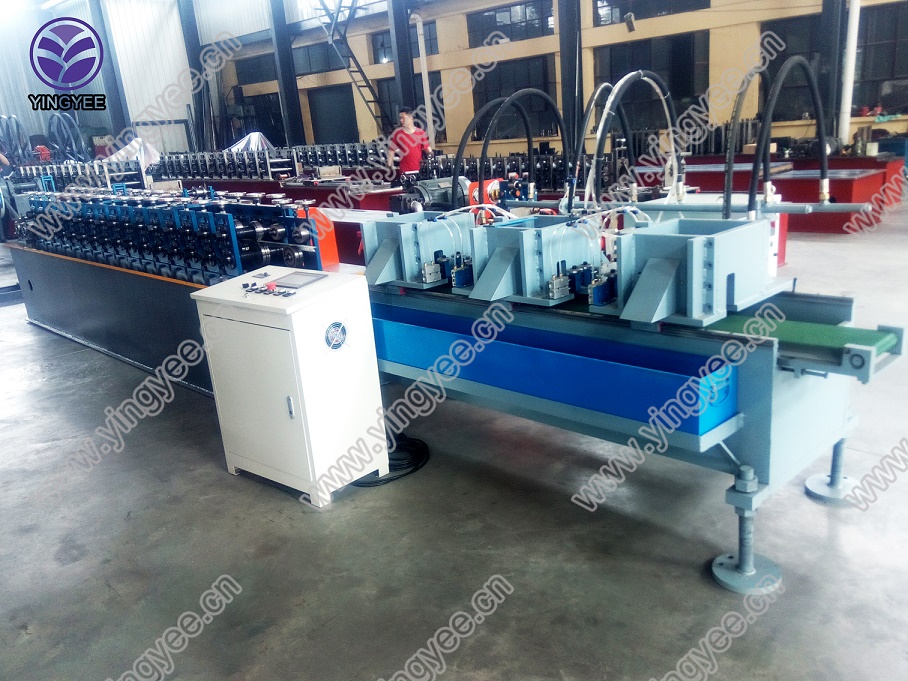
Roll Forming Machine for Roofing Sheets An Overview
In the construction industry, steel roofing sheets have gained immense popularity due to their durability, lightweight nature, and cost-effectiveness. The process of fabricating these sheets has seen significant advancements over the years, with roll forming machines playing a pivotal role in mass production. This article delves into the operation, benefits, and applications of roll forming machines for roofing sheets.
What is a Roll Forming Machine?
A roll forming machine is a specialized piece of equipment used to transform flat metal sheets into specific shapes through a series of roller stations. Each roller is precisely designed to shape the metal progressively until it reaches the desired profile. In the case of roofing sheets, the machine can create various designs, including standing seam, corrugated, and tile profiles.
The process begins with a flat metal sheet, typically made of galvanized or pre-painted steel, which is fed into the machine. As the sheet passes through the rollers, each subsequent station applies pressure and reshapes the metal. The result is a continuous length of roofing material that can be cut to specify dimensions as needed.
Benefits of Using Roll Forming Machines for Roofing Sheets
1. Efficiency and Speed Roll forming machines operate continuously, which allows for high production rates. They can produce long lengths of profiled metal sheets in a matter of minutes, significantly reducing labor costs and time associated with traditional fabrication methods.
2. Precision The design of roll forming machines ensures consistent quality. Each sheet produced is uniform in terms of dimensions and shape, minimizing waste and the need for rework.
3. Versatility Roll forming machines can be customized to create a wide variety of profiles. This flexibility allows manufacturers to cater to diverse customer needs, from residential roofing to commercial construction.
4. Material Optimization Roll forming uses minimal material, as it relies on the continuous process rather than cutting and welding. This optimizes material usage, leading to lower production costs.

5. Reduced Labor Requirements With automation and advanced technology, the need for manual labor in the shaping and cutting of sheets is significantly reduced. This not only lowers labor costs but also minimizes human error.
6. Durability Roofing sheets produced by roll forming machines are robust and resistant to various environmental conditions, ensuring longevity. This is particularly crucial for industries where the roofing must withstand harsh weather.
Applications of Roofing Sheets
Roofing sheets formed by roll forming machines are widely used across several sectors
- Residential Buildings Homeowners appreciate the aesthetic and functional benefits of steel roofing. The variety of designs available ensures that the roofing complements any architectural style.
- Commercial Structures Warehouses, factories, and retail buildings often utilize metal roofing for its durability and low maintenance requirements.
- Agricultural Buildings Barns and storage facilities benefit from the weather resistance of roll-formed roofing sheets, providing reliable shelter for livestock and equipment.
- Industrial Projects In industrial applications, roofing sheets must be able to endure heavy loads; roll forming machines provide the necessary strength and longevity.
Conclusion
The roll forming machine for roofing sheets stands as a testament to the innovative approaches in modern manufacturing techniques. With its ability to produce high-quality, durable roofing materials efficiently, it meets the growing demands of various construction sectors. As technology advances, we can expect further enhancements in roll forming processes, contributing to more sustainable and economical building solutions. The versatility, precision, and speed of roll forming machines not only revolutionize the way roofing sheets are manufactured but also redefine the standards of the roofing industry. As a result, this technology plays a crucial role in shaping the future of construction, ensuring that buildings are not only aesthetically pleasing but also resilient and efficient.